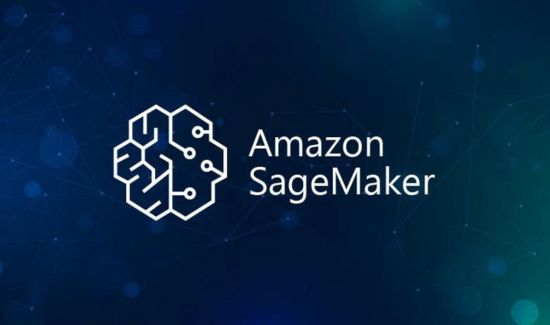In the ever-changing field of artificial intelligence (AI), 2024 will be remembered as a turning point since AI technologies have advanced beyond simple innovation to become essential parts of many different businesses. AI has a huge impact on every industry, including healthcare, banking, education, and retail.
Table of Contents
Introduction:
In 2024, artificial intelligence (AI) will have advanced to unparalleled levels of sophistication and ubiquity in many industries, marking a critical turning point in the field’s history. AI tools are changing how businesses operate, innovate, and interact with customers in a variety of industries, including healthcare, finance, education, and retail. This blog delves into the top ten AI tools that are spearheading this revolutionary journey, improving decision-making, reinventing procedures, and opening up new avenues in a variety of fields.
Keeping up with the newest developments and resources is essential for enterprises looking to fully utilize artificial intelligence in this era of AI-driven innovation. These artificial intelligence (AI) tools, which span natural language processing, computer vision, and predictive analytics, are at the forefront of technological advancement and enable developers, data scientists, and corporate executives to take on difficult problems and propel digital transformation.
Join us as we explore the features and implications of these top ten AI tools, looking at how they are influencing markets, encouraging creativity, and laying the groundwork for a time when AI is not just a tool but a fundamental aspect of contemporary life.
AI tools:
Now let’s examine the top ten AI tools that are causing this change:
GPT-4 by OpenAI:
As natural language processing (NLP) advances, OpenAI’s GPT-4 is at the vanguard. Building on the achievements of its predecessors, GPT-4 demonstrates unmatched ability to comprehend and produce writing that is human-like. It is essential for applications like content creation, language translation, and virtual assistants due to its capacity to understand context, produce well-reasoned responses, and adjust to a variety of tasks.

Advantages:
Let’s examine the advantages of OpenAI’s GPT-4:
- Natural Language Understanding: Chatbots and content creation are made possible by GPT-4’s exceptional ability to comprehend context and produce writing that reads like that of a person.
- Versatility: Its adaptability to a range of tasks, including summarization and language translation, boosts productivity across industries.
The Codex of OpenAI:
An AI tool called Codex may produce code in response to commands in natural language. Codex, which is integrated into a number of IDEs (Integrated Development Environments), has significantly sped up the development process for programmers by producing code snippets, automating repetitive operations, and offering insightful recommendations.
Amazon SageMaker:
AWS cloud machine learning model construction, training, and deployment are made easier with the help of Amazon SageMaker. SageMaker serves a broad spectrum of users with its extensive toolkit, including data scientists, ML engineers, business analysts, and developers. The AI workflow is streamlined by its managed services for data labeling, model training, and inference deployment, which lowers the time-to-market and operational overhead for AI projects.

PyTorch:
Another well-liked open-source deep learning framework, PyTorch, was created by Facebook’s AI Research lab (FAIR) and is renowned for its adaptability and simplicity of usage. It is extensively utilized for applications including computer vision, natural language processing, and reinforcement learning in research and production settings.
Watson from IBM:
Watson is still a major player in the AI space, providing a range of solutions for companies in many sectors. Watson keeps pushing the envelope of what is possible with AI-driven insights, from virtual agents and predictive modeling to analytics powered by AI.
Microsoft Azure Cognitive Services:
These AI services and APIs provide developers with a wide range of options to integrate speech, language, vision, and decision-making into their applications. Azure Cognitive Services enable developers to easily construct intelligent applications with features like facial recognition and language interpretation.
Salesforce Einstein:
By integrating AI capabilities into the Salesforce ecosystem, Salesforce Einstein helps businesses use AI-driven insights to improve customer service, increase sales, and automate operations. Organizations are empowered to make data-driven decisions by its personalized recommendations and predictive analytics.
BERT:
Since its introduction by Google, BERT has been a mainstay in tasks involving natural language processing. It is a preferred tool for sentiment analysis, question-answering systems, and language understanding in search engines due to its bidirectional approach to language understanding.
TensorFlow:
TensorFlow, an open-source machine learning framework developed by Google, remains a favorite among developers for building and deploying machine learning models at scale. Its versatility and extensive community support make it a top choice for implementing AI solutions in various domains.
AlphaFold from DeepMind:
AlphaFold is a cutting-edge artificial intelligence tool for predicting protein folding, with significant applications in bioinformatics and drug discovery. AlphaFold speeds up the process of comprehending illnesses and creating efficient remedies by precisely anticipating the three-dimensional structure of proteins.

Conclusion:
The cutting edge of artificial intelligence technology, which is fostering innovation and industry revolution, is embodied in these top 10 AI tools of 2024. Businesses that leverage AI’s capabilities will be more competitive in the digital economy as the technology develops.

